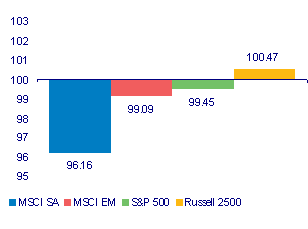The worldwide financial markets and the global economy have suffered from a financial crisis on a scale not experienced since the 1930s. But the crisis now appears to be over. Credit spreads have returned to more normal levels, activity in credit markets has recovered strongly, and the volatility of day-to-day movements in share prices has declined. Moreover, the recovery of the global economy, of which the U.S. is such an important part, now appears strong enough to suggest that the recession of 2008-9 may turn out to have been a mild one of short duration. The IMF is forecasting global growth of 4% in 2011 after recording a marginal decline of about 1% in 2009, and thus the global financial crisis does not appear to have led to an economic crisis.
Click to read the full article: Lessons from the Global Financial Crisis (Or Why Capital Structure Is Too Important to Be Left to Regulation)
76JEBQJN5MTY

